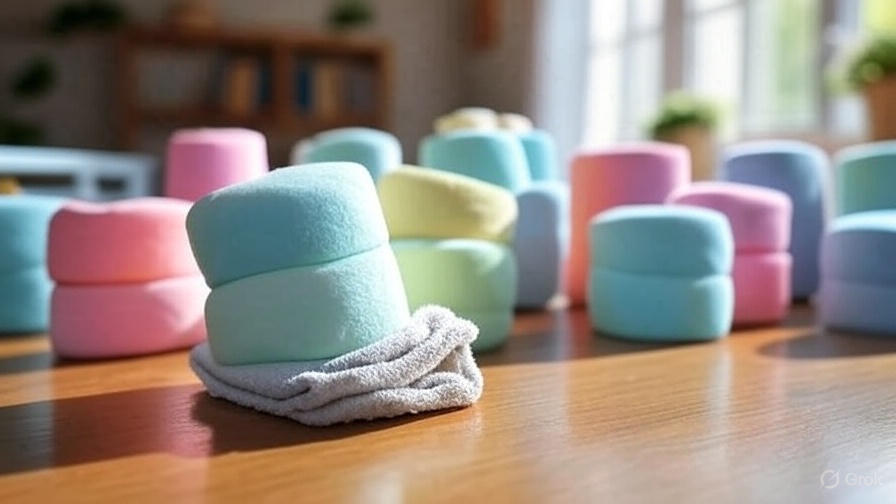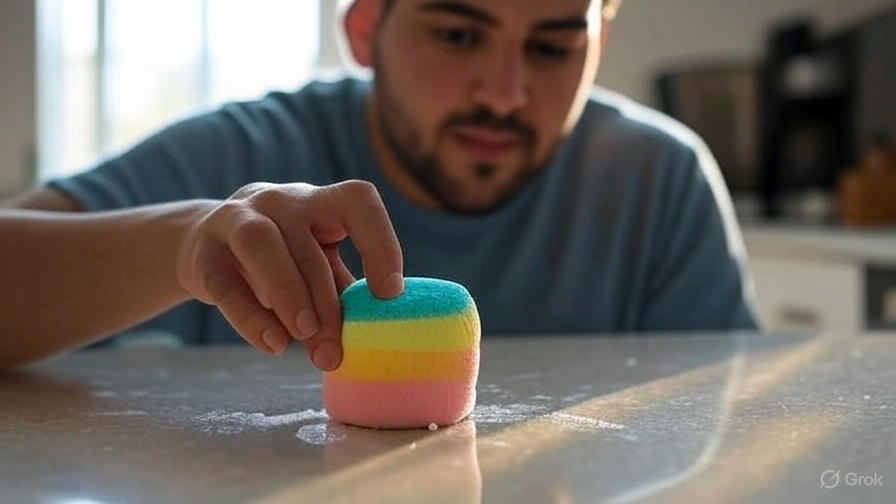How to Clean Squishmallows?
Squishmallows have captured hearts worldwide with their irresistibly soft texture and adorable designs. These beloved plush toys become constant companions for children and collectors alike, which means they inevitably need regular cleaning. Many owners worry about damaging their precious Squishmallows during the washing process, but proper care can keep these cuddly friends looking and feeling like new for years to come.
This comprehensive guide covers everything you need to know about cleaning Squishmallows safely and effectively. From routine maintenance to deep cleaning methods, you’ll discover proven techniques that preserve the signature squishiness while eliminating dirt, odors, and allergens.
Why Regular Cleaning Matters for Your Squishmallows
Squishmallows accumulate dust, oils, and bacteria through regular handling and play. Children often carry these plush toys everywhere, exposing them to various contaminants that can affect both hygiene and longevity. Regular cleaning prevents the buildup of allergens that might trigger sensitivities in sensitive individuals.
Proper maintenance also preserves the fabric’s integrity and keeps colors vibrant. Neglected Squishmallows can develop permanent stains, unpleasant odors, and matted areas that compromise their beloved soft texture. Clean toys last longer and maintain their collectible value for enthusiasts who treasure rare or limited-edition pieces.
The polyester filling inside Squishmallows can harbor moisture if not properly dried, leading to mold or mildew growth. This creates health risks and ruins the toy’s structure. Establishing a regular cleaning routine prevents these issues and ensures your Squishmallows remain safe and huggable.
Essential Supplies for Squishmallow Care
Before starting any cleaning process, gather the necessary supplies to ensure successful results. You’ll need mild laundry detergent specifically designed for delicate fabrics. Avoid harsh chemicals, bleach, or fabric softeners that can damage the polyester material or cause skin irritation.
A soft-bristled brush or clean toothbrush helps tackle stubborn spots without damaging the fabric. White vinegar serves as a natural deodorizer and stain remover, while baking soda absorbs odors effectively. Keep clean towels handy for blotting and drying purposes.
For machine washing, mesh laundry bags protect Squishmallows from agitation damage. Tennis balls or dryer balls help maintain fluffiness during the drying cycle. A spray bottle allows for targeted spot cleaning when full washing isn’t necessary.
Spot Cleaning: Your First Line of Defense
Spot cleaning addresses minor stains and spills immediately, preventing them from setting into the fabric. This method works best for fresh stains and high-traffic areas that need frequent attention.
Start by blotting liquid spills with a clean, dry cloth. Never rub the stain, as this pushes contaminants deeper into the fibers. Work from the outside of the stain toward the center to prevent spreading.
Create a gentle cleaning solution by mixing one tablespoon of mild detergent with two cups of cool water. Dip a clean cloth into the solution and wring out excess moisture. Gently dab the stained area, then blot with a clean, damp cloth to remove soap residue.
For stubborn stains, mix equal parts white vinegar and water in a spray bottle. Lightly mist the affected area and let it sit for five minutes before blotting with a clean cloth. The acidic properties of vinegar break down many common stains naturally.
Oil-based stains require a different approach. Sprinkle a small amount of cornstarch or baking soda on the stain and let it absorb the oil for 15-20 minutes. Gently brush away the powder and proceed with the standard spot cleaning method.
Machine Washing: The Deep Clean Method
Machine washing provides the most thorough cleaning for heavily soiled Squishmallows. This method requires careful attention to settings and preparation to avoid damage.
First, check the care label on your Squishmallow. Most feature machine-washable instructions, but some special editions or older models may require hand washing only. Remove any accessories like clothing or tags that might not be washing machine safe.
Place your Squishmallow in a mesh laundry bag or pillowcase tied shut. This protective barrier prevents stretching and reduces agitation during the wash cycle. You can wash multiple small Squishmallows together in the same bag.
Use cold water exclusively, as hot water can cause shrinkage and color fading. Select the gentle or delicate cycle to minimize agitation. Add a small amount of mild, fragrance-free detergent—about half the amount you’d normally use for a regular load.
Never use bleach, fabric softener, or harsh chemicals that can break down the polyester fibers or cause allergic reactions. These products also leave residues that attract dirt more quickly.
Run an extra rinse cycle to ensure all detergent is removed from the fabric. Soap residue can cause stiffness and skin irritation, especially for children with sensitive skin.
Hand Washing: The Gentle Alternative
Hand washing offers more control over the cleaning process and works well for delicate or vintage Squishmallows. This method also suits collectors who want to minimize any risk of damage to rare pieces.
Fill a large basin or bathtub with cool water and add a small amount of mild detergent. Swish the water to create light suds, but avoid creating excessive foam that’s difficult to rinse out.
Submerge the Squishmallow completely and gently squeeze the soapy water through the fabric. Focus on heavily soiled areas by gently massaging them with your fingers. Avoid wringing or twisting motions that can damage the filling or stretch the fabric.
Let the Squishmallow soak for 10-15 minutes to allow the detergent to penetrate stains and odors. This soaking time is particularly beneficial for toys that haven’t been cleaned in a while.
Drain the soapy water and refill the basin with clean, cool water for rinsing. Squeeze the Squishmallow gently to remove soap residue. You may need to rinse several times until the water runs clear and no suds appear when you squeeze the toy.
Press the Squishmallow between clean towels to remove excess water. Never wring or twist the toy, as this can permanently damage its shape and texture.

Drying Techniques That Preserve Fluffiness
Proper drying is crucial for maintaining your Squishmallow’s signature softness and preventing mold growth. The method you choose depends on your available time and equipment.
Air drying remains the safest option for all Squishmallows. Lay the clean toy on a flat surface covered with clean towels. Flip it every few hours to ensure even drying and prevent flat spots from developing. This process typically takes 24-48 hours depending on size and humidity levels.
For faster drying, use a fan to circulate air around the Squishmallow. Avoid direct sunlight, which can fade colors and potentially damage the fabric over time.
Machine drying on low heat works for most Squishmallows, but requires careful monitoring. Place the toy in a mesh bag with two or three clean tennis balls or dryer balls. These items help fluff the filling and prevent clumping during the drying process.
Use the lowest heat setting available and check the Squishmallow every 15-20 minutes. Remove it while still slightly damp to prevent over-drying, which can make the fabric stiff. Allow it to finish air drying naturally.
Never use high heat, which can melt the polyester filling or cause shrinkage. Some collectors prefer to avoid machine drying entirely to maximize their Squishmallows’ lifespan.
Tackling Tough Odors Naturally
Persistent odors sometimes linger even after thorough washing. These natural deodorizing methods effectively eliminate smells without harsh chemicals.
Baking soda works as a powerful odor absorber. Sprinkle a light layer over the entire Squishmallow and let it sit overnight in a well-ventilated area. Vacuum or brush away the powder the next day, then proceed with regular cleaning if needed.
White vinegar neutralizes many odor-causing compounds. Mix equal parts water and white vinegar in a spray bottle and lightly mist the affected areas. The vinegar smell dissipates as it dries, taking other odors with it.
For musty smells that suggest mold or mildew, create a stronger vinegar solution using one cup of white vinegar to two cups of water. Lightly spray the entire Squishmallow and allow it to air dry completely in direct sunlight if possible. The UV rays help kill remaining bacteria and mold spores.
Activated charcoal bags placed near stored Squishmallows absorb ongoing odors and moisture. This preventive measure works particularly well in humid climates or for toys stored in basements or closets.
Preventive Care Tips for Long-Term Maintenance
Regular maintenance prevents major cleaning challenges and extends your Squishmallows’ lifespan significantly. Simple daily and weekly habits make a substantial difference in cleanliness and appearance.
Brush your Squishmallows weekly with a soft-bristled brush to remove surface dust and prevent matting. This gentle grooming distributes natural oils evenly and maintains the fabric’s texture.
Store Squishmallows in clean, dry areas away from direct sunlight and humidity. Plastic storage containers with tight-fitting lids protect against dust and pests, but ensure toys are completely dry before sealing them away.
Rotate frequently used Squishmallows to prevent excessive wear on favorites. This practice also allows deep cleaning of heavily used toys while others serve as temporary companions.
Address spills and stains immediately before they set into the fabric. Keep a small spray bottle filled with diluted vinegar solution handy for quick treatment of minor accidents.
Wash hands before handling clean Squishmallows to prevent transferring oils and bacteria. This simple step significantly reduces the frequency of deep cleaning needed.
Special Considerations for Different Squishmallow Types
Various Squishmallow collections require slightly different care approaches based on their unique features and materials.
Flip Squishmallows with reversible designs need extra attention during washing to prevent damage to the special mechanism. Hand washing works best for these delicate toys, and always ensure complete drying before flipping to prevent moisture from being trapped inside.
Scented Squishmallows may lose their fragrance during washing. This is normal and doesn’t indicate damage. Avoid trying to restore scents with perfumes or air fresheners, which can cause skin irritation and attract dirt.
Squishmallows with attached accessories like clothing or bows require careful inspection before washing. Remove detachable items when possible, or secure them with safety pins to prevent loss during the wash cycle.
Large Squishmallows may not fit comfortably in standard washing machines. For these giant versions, hand washing in a bathtub provides the best results. Enlist help when moving wet large Squishmallows to prevent injury and ensure proper support.
Vintage or rare Squishmallows deserve extra gentle treatment. When in doubt, hand wash these valuable pieces and consider professional cleaning services for extremely rare or damaged items.
Troubleshooting Common Cleaning Problems
Even with careful attention, cleaning issues sometimes arise. These solutions address the most frequent problems Squishmallow owners encounter.
Flat or lumpy areas after washing usually result from inadequate drying or agitation during washing. Gently massage the affected areas while the toy is slightly damp to redistribute the filling. Use tennis balls during machine drying to help restore fluffiness.
Color bleeding rarely occurs with quality Squishmallows but can happen with older or counterfeit items. Test colorfastness on a hidden area before full washing. If bleeding occurs, rinse immediately with cold water and avoid mixing different colored toys in the same wash load.
Shrinkage typically results from hot water or high heat drying. Prevention is key, as shrunk toys rarely return to their original size. Gently stretch the fabric while damp to minimize the effect, but accept that some permanent size reduction may occur.
Lingering soap residue makes Squishmallows feel stiff and can cause skin irritation. This problem requires additional rinsing cycles until the water runs completely clear when you squeeze the toy.
Persistent stains may need repeated treatment or professional cleaning. Avoid using harsh chemicals that can damage the fabric permanently. Sometimes gentle persistence works better than aggressive treatment.
When to Consider Professional Cleaning
Some situations warrant professional cleaning services despite the additional cost. Valuable collector pieces, severely damaged toys, or Squishmallows with sentimental significance may benefit from expert care.
Professional cleaners have access to specialized equipment and cleaning solutions not available to consumers. They can often restore heavily damaged toys or address problems that home cleaning methods cannot resolve.
Large collections benefit from professional cleaning services that can handle multiple items efficiently. This option makes sense for collectors with dozens of Squishmallows or childcare facilities that need regular sanitization.
Antique or discontinued Squishmallows may require expert knowledge to clean safely without causing damage that reduces their value. Professional cleaners understand the specific needs of different materials and manufacturing periods.
Conclusion: Keeping Your Squishmallows Fresh and Loveable
Proper cleaning techniques ensure your beloved Squishmallows remain soft, safe, and beautiful for years of enjoyment. Regular maintenance prevents major problems and extends their lifespan significantly. Whether you choose spot cleaning for minor issues or deep washing for thorough refreshing, gentle methods preserve the qualities that make these plush toys so special.
Remember that patience and gentle handling produce the best results. Rush jobs or harsh chemicals often cause more damage than the original problems. With consistent care and proper techniques, your Squishmallow collection will continue bringing joy while staying fresh and huggable.
The investment in proper cleaning supplies and techniques pays dividends in the longevity and appearance of your cherished toys. Clean Squishmallows not only look and smell better but also provide a healthier environment for children and collectors who spend time with these beloved companions.







